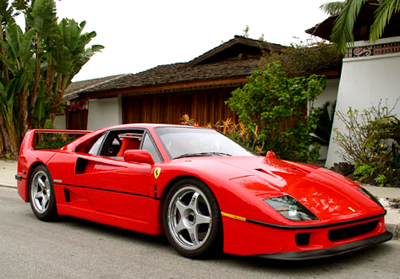
"The while-it's-apart list kicked the maintenance bill to $21,000,
making our 'serviced only 500 miles ago' F40 seem like the Ferrari
world's equivalent of a beater Camaro."
Often when someone decides to
part with a prized Ferrari, it may not have been started or driven
for months or years. Just as likely, chances are the new owner,
excited by his new toy, wants to start driving “now,” and as often
as he can. And that’s where the problems can start.
A VISIT FROM
FATHER TIME
Anyone buying a $4,500 1992 Chevy Camaro expects a worn
suspension, flaccid shocks, minor engine leaks, a clunking
differential, and a/c overdue for a recharge. The buyer gets basic
transportation and accepts
the shortcomings.
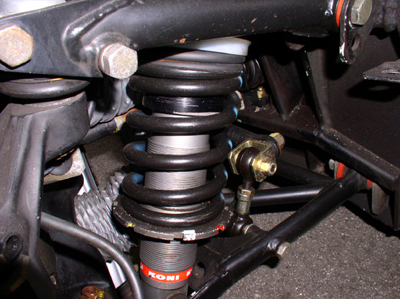 Ferraris
also age. Someone buying a 1992 F40 will be spending about
$335,000, yet their “new” F40 will have the same inherent,
age-related problems as that Camaro. They will just cost much,
much more to repair. Virtually every 10-plus-year-old Ferrari
needs the shocks rebuilt or replaced, suspension bushings
replaced, brake hoses replaced, water pump rebuilt, water hoses
replaced, an engine reseal because of oil leaks, and fuel cells
replaced, if so equipped. All rubber or related components
deteriorate with age—the key is to identify these issues and
factor them into your sales negotiation. Ferraris
also age. Someone buying a 1992 F40 will be spending about
$335,000, yet their “new” F40 will have the same inherent,
age-related problems as that Camaro. They will just cost much,
much more to repair. Virtually every 10-plus-year-old Ferrari
needs the shocks rebuilt or replaced, suspension bushings
replaced, brake hoses replaced, water pump rebuilt, water hoses
replaced, an engine reseal because of oil leaks, and fuel cells
replaced, if so equipped. All rubber or related components
deteriorate with age—the key is to identify these issues and
factor them into your sales negotiation.
Common sense and driver preservation dictate that safety-related
items such as deteriorated brake lines or frozen shocks or brake
calipers have to be repaired before the car can be used, and
should be factored in at some percentage of the purchase price.
While age-related problems are negotiable, other issues can be
deal killers. These include major crash damage that has been
poorly repaired, bent frames that have been badly fixed, or a sick
engine that needs an expensive and mandatory engine rebuild.
THREE
STEPS TO A HAPPY BUYER
Any successful purchase of an older Ferrari involves three steps.
First, a pre–purchase inspection that tells all involved exactly
what potential problems are lurking. Secondly, an understanding on
the buyer’s part that these are “just used cars,” ones that almost
always need immediate post-purchase service work. And third, the
acceptance that most of the money spent beyond the purchase price
will never be recovered and becomes a diminishing return.
I usually recommend that buyers and sellers reach a percentage
split agreement on the estimated cost of repairs. These agreements
work well because the buyers aren’t nearly as eager to have every
aging part on the car replaced if they are paying part of the
bill, and the sellers are (begrudgingly) paying for their own
deferred maintenance.
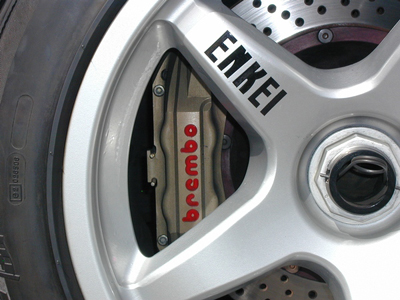 JUST
ONE MORE THING JUST
ONE MORE THING
The Ferrari caveat is that it is oh so easy to go into the “while
you’re at it” mode. While the brakes are off, let’s have the
calipers re-plated and re-sleeved. Isn’t the moment while the
suspension is apart for a bushing replacement the perfect time to
powder coat or re-plate the suspension arms, like everyone else in
the local Ferrari club has had done? And while the brake rotors
are off being machined, how about powder coating the uprights and
replacing the wheel bearings. Suddenly, a basic brake job and
suspension bushing replacement has become a $20,000 restoration of
both systems.
It is not, however, the seller’s responsibility to provide the
buyer with a suspension capable of winning a Ferrari Club of
America National Meet Platinum Award under the guise of a routine
service.
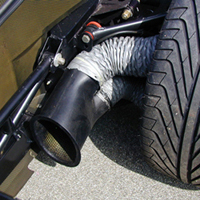 THE
$21,000 LESSON THE
$21,000 LESSON
As a quick example, late last year I sold F40 S/N 90568, a car
that had almost $100,000 in “go-fast” updates such as F40 LM
brakes, wheels, turbos, ECUs, throttle linkage, short shift kit,
ad infinitum. This 1992 F40 had only 7,774 original miles and had
seen less than 500 miles since it was last serviced. On the test
drive, it lit the tires up in third gear when the boost kicked in
and was, simply put, scary fast.
Much to the surprise of all involved, the pre-purchase inspection
found a long list of needed repairs including a bent valve and a
worn out limited slip, so an engine-out service was mandatory. The
starting
estimate for the work was for $15,000-plus, this on an unusually
nice, supposedly
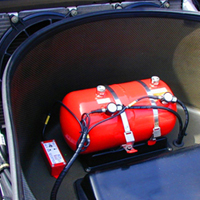 “no
stories” car. “no
stories” car.
The while-it’s-apart list included the expected all new belts and
hoses, brake pads, etc. A new clutch assembly, special brake work
to fit an emergency brake to the LM racing brakes, and a radar
detector kicked the final bill to $21,000-plus making our
“serviced only 500 miles ago” F40 suddenly seem like the Ferrari
world’s equivalent of that beater Camaro.
Fortunately, the buyer accepted that the majority of the problems
were common to most 10-year-old Ferraris. After the usual
negotiations, a compromise was reached, an equitable split for
repairs was made, and a purchase agreement was signed. Both
parties wound up satisfied.
DOING THE
SPLITS
The degree of compromise involved in any purchase is a matter of
the seller’s motivation to sell and willingness to accept less
than was anticipated, factored against the buyer’s desire to own
the car and pay a
little more for the privilege. Add in the broker’s experience, his
ability to explain the problems, and the
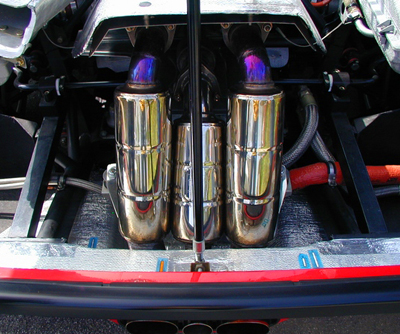 negotiation
skills that justify his commission, and the gap between
expectation and reality in dealing with negotiation
skills that justify his commission, and the gap between
expectation and reality in dealing with
deferred maintenance can usually be resolved.
The buyer and seller here both had to accept that a 1992 F40 hot
rod is worth about $325,000, and regardless of how much money is
spent on reconditioning, it will remain a $325,000 car. The
$21,000-plus spent on service will enhance the new owner’s driving
pleasure, safety and peace of mind, but that’s it. No value add to
the bottom line.
As I told the buyer, expect your used F40 to need the minimal
maintenance of a Mercedes and you’ll be disappointed. Expect it to
need an infusion of love—and more than a few dollars to return it
to its “as new”
condition—and you’ll be rewarded with a terrific ride. Every
hobby, from collecting stamps to America’s Cup competition, has a
price attached.
With Ferraris, expect the “pay to play” ticket to be a healthy
one, and you won’t be disappointed. And, at a local track day,
when you hit redline in 3rd gear in your F40, and crack a quick
shift into 4th and break
the rear tires loose, I guarantee the amount you’ve spent to get
there will be the furthest thing from your mind.
 |
|

